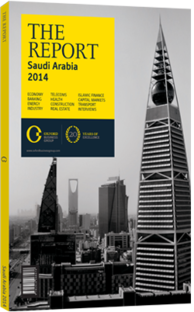Linking up the region: Significant rail investment in the GCC should help to boost trade
With every GCC member state investing in transport, the region is currently undergoing something of a road and rail boom. In the first three quarters of 2013, about $30bn in railway construction contracts were awarded across the GCC, while some estimates suggest as much as $200bn could be spent on regional rail development initiatives over the next five years.
This transportation surge poses considerable challenges – from engineering high-speed rail links in desert climates to ensuring the necessary international cooperation and political commitment to keep project goals on track and for cross-border trains to run on time. However, few can doubt the need for such projects as the region sees continued, robust economic growth and a steadily increasing population.
GROWING FOCUS: In the longer term, the GCC transport grid – and rail in particular – will likely become a key factor in the continued and sustainable development of each country’s economy, as well as the wider region. A recent report on construction activity in the GCC plus Iraq by London-headquartered consultancy firm EC Harris estimated that around 22% of all spend on major construction projects (those worth more than $1bn) over the 2014-19 period would be on transport-related schemes. Almost all of this is taking place within the GCC, with the lion’s share on road and rail.
JOINING UP THE DOTS: Indeed, many of the rail schemes across the bloc feed into the wider, 2177-km Gulf Railway network. Estimated to cost between $20bn and $200bn – depending on the method of calculation – the scheme will join up the rail projects under way into a single integrated, GCC grid. This may also eventually extend to Yemen, if current feasibility studies produce a favourable result. The network will also branch out to neighbouring Jordan and Iraq, providing even greater reach. The existing plans, approved by GCC transport ministers in 2008, appear to be gaining momentum from the work being done on national rail links.
The rationale behind the GCC Railway seems clear: projections of population growth within the GCC widely forecast a doubling by 2024 over the 2010 figure, with GDP averaging around 5% growth across the region as a whole. These numbers suggest strong potential demand for both passenger and freight transport, with rail widely seen as the most efficient way to meet this need. Intra-GCC trade – which has averaged around 3% of GDP over the past decade – is also thought to be a potential growth area in the years ahead. A lot of this trade is currently done by road and sea, and consists of bulk inputs for the petrochemicals industry. Much of this could be more efficiently transported by rail.
CHALLENGES: Central to realising the network is the GCC Railway Authority, which is coordinating the linkup. This involves working with each national authority to make sure that its own domestic rail development plans dovetail with the needs of the GCC-wide network. The creation of uniform technical standards is also part of the vision, as is the standardisation of procedures. There are, however, a number of engineering challenges that need to be addressed. With summer temperatures often well above 40°C, as well as the major drops that occur at night, rail lines have to be able to withstand significant fluctuations in temperature. There is also the issue of keeping the desert sands at bay, as dunes have a tendency to shift.
Another issue is human resources. With each GCC state pursuing its own individual rail project, a shortage of experienced and trained personnel to work on the GCC rail initiative may be a hurdle. In addition, Customs and border checks between GCC members are not always as smooth as some might wish. Ensuring that transit across frontiers is as efficient as possible is crucial to the project’s success. Yet with the rail boom in the Gulf now clearly in full swing, the chances of the system linking up effectively into a unified GCC network have never been greater. The benefits for businesses and investors are clear too, from those groups directly involved in building the rail infrastructure to those that stand to benefit from faster and more cost-efficient regional transport once the network is complete.
You have reached the limit of premium articles you can view for free.
Choose from the options below to purchase print or digital editions of our Reports. You can also purchase a website subscription giving you unlimited access to all of our Reports online for 12 months.
If you have already purchased this Report or have a website subscription, please login to continue.

